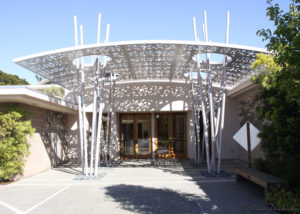 There are lots of reasons to use Git as your source-code management system. Whether used as a primary system, or in conjunction with an existing legacy repository, I’m going to argue that if you’re not using Git now, you should be at least testing it out.
There are lots of reasons to use Git as your source-code management system. Whether used as a primary system, or in conjunction with an existing legacy repository, I’m going to argue that if you’re not using Git now, you should be at least testing it out.
Basics of Git: It is open source, and runs on Linux, Unix and Windows servers. It is stable. It is solid. It is fast. It is supported by just about every major tool vendor. Developers love Git. Managers love Git.
Not long ago, much of the world standardized on Concurrent Versions System (CVS) as its version control system. Then Subversion (SVN) came along, and the world standardized on that. Yes, yes, I know there are dozens of other version control systems, ranging from Microsoft’s Visual SourceSafe and Team Foundation Server to IBM Rational’s ClearCase. Those have always been niche products. Some are very successful niche products, but the industry standards have been CVS and SVN for years.
Along came Git, designed by Linus Torvalds in 2005, now headed up by Junio Hamano. For a brief history of Git, read “The Legacy of Linus Torvalds: Linux, Git, and One Giant Flamethrower,” by Robert McMillan, published in Wired in November 2012. For the official history, see the Git website.
What’s so wonderful about Git? I’ll answer in two ways: industry support and impressive functionality.
For industry support, let me refer you to two new articles by SD Times’ Lisa Morgan. Those stories inspired this column. The first is“How to get Git into the enterprise,” and the other is “Git smart about tools: A Buyers Guide.” You’ll see that nearly every major industry player supports Git—even competing SCM systems have worked to ensure interoperability. That’s a heck of an endorsement, and shows the stability and maturity of the platform.
Don’t take my word for it for the impressive functionality. Instead, let me quote from other bloggers.
Tobias Günther: “Work Offline: What if you want to work while you’re on the move? With a centralized VCS like Subversion or CVS, you’re stranded if you’re not connected to the central repository. With Git, almost everything is possible simply on your local machine: make a commit, browse your project’s complete history, merge or create branches… Git lets you decide where and when you want to work.”
Stephen Ball: “Resolving conflicts is way easier (than SVN): In Git, if I have a private branch from a branch that has been updated with new (conflicting) commits, I can rebase its commits one at a time against the public destination branch. I can resolve conflicts as they arise between my code and the current codebase. This makes dealing with conflicts easy because I get the context of the conflict (my commit message) and only see one conflict at a time.
“In SVN if I merge a branch against another and there are a lot of conflicts, there’s nothing I can do but resolve them all at the same time. What a mess.”
Scott Chacon: “There are tons of fantastic and powerful features in Git that help with debugging, complex diffing and merging, and more. There is also a great developer community to tap into and become a part of and a number of really good free resources online to help you learn and use Git…
“I want to share with you the concept that you can think about version control not as a necessary inconvenience that you need to put up with in order to collaborate, but rather as a powerful framework for managing your work separately in contexts, for being able to switch and merge between those contexts quickly and easily, for being able to make decisions late and craft your work without having to pre-plan everything all the time. Git makes all of these things easy and prioritizes them and should change the way you think about how to approach a problem in any of your projects and version control itself.”
Nicola Paolucci: “If you don’t like speed, being productive and more reliable coding practices, then you shouldn’t use Git.”
Peter Cho: “Most developers would be delighted if they can change their workflow to use Git. Switching over early would be more ideal unless, of course, your SCM relies on a large network of dependent applications. If it’s not viable to change SCM systems, I would highly recommend using it on future projects.
“Git is infamous for having a large suite of tools that even seasoned users need months to master. However, getting into the fundamentals of Git is simple if you’re trying to switch over from SVN or CVS. So give a try sometime.”
Thomas Koch: “Somebody probably already recommended you to switch to Git, because it’s the best VCS. I’d like to go a step further now and talk about the risk you’re taking if you won’t switch soon. By still using SVN (if you’re using CVS you’re doomed anyway), you communicate the following: We’re ignorant about the fact that the rest of the (free) world switched to Git. We don’t invest time to train our developers in new technologies. We don’t care to provide the best development infrastructure. We’re not used to collaborate with external contributors. We’re not aware how much Subversion sucks and that Subversion does not support any decent development process. Yes, our development process most certainly sucks too.”
Günther also wrote, “Go With the Flow: Only dead fish swim with the stream. And sometimes, clever developers do, too. Git is used by more and more well-known companies and Open Source projects: Ruby On Rails, jQuery, Perl, Debian, the Linux Kernel, and many more. A large community often is an advantage by itself because an ecosystem evolves around the system. Lots of tutorials, tools (do I have to mention Tower?) and services make Git even more attractive.”
I’m sure there are arguments against Git. Nearly all the ones I’ve heard have come to me via competing source-code management vendors, not from developers who have actually tried Git for more at least one pilot. If you aren’t using Git, check it out. It’s the present and future of version control systems.

 With the May 20 introduction of the Surface Pro 3, Microsoft has unofficially withdrawn from the tablet market. If you’re looking for a tablet computer, your two main platform choices are now Android and iOS.
With the May 20 introduction of the Surface Pro 3, Microsoft has unofficially withdrawn from the tablet market. If you’re looking for a tablet computer, your two main platform choices are now Android and iOS. South San Francisco, California — Writing software would be oh, so much simpler if we didn’t have all those darned choices. HTML5 or native apps? Windows Server in the data center or Windows Azure in the cloud? Which Linux distro? Java or C#? Continuous Integration? Continuous Delivery? Git or Subversion or both? NoSQL? Which APIs? Node.js? Follow-the-sun?
South San Francisco, California — Writing software would be oh, so much simpler if we didn’t have all those darned choices. HTML5 or native apps? Windows Server in the data center or Windows Azure in the cloud? Which Linux distro? Java or C#? Continuous Integration? Continuous Delivery? Git or Subversion or both? NoSQL? Which APIs? Node.js? Follow-the-sun? This is one of a series of articles I wrote for the monthly Bulletin of
This is one of a series of articles I wrote for the monthly Bulletin of